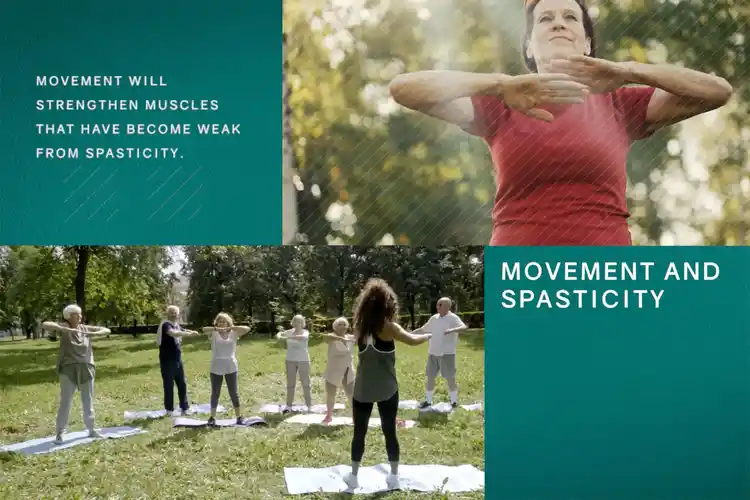Movement and Stretching to Manage Spasticity

Hide Video Transcript
Video Transcript
[LOW MUSIC PLAYING] [TYPING SOUND]
Movement pretty much does the same thing. And movement also allows you to strengthen muscles because a lot of patients who have spasticity tend to also be weak. Any exercise or any activity that causes you or forces you to stretch and move without hurting yourself is a good thing. Because if you don't move a muscle, you don't use a muscle, you don't stretch the muscle, the muscle is going to weaken. And in cases of spasticity, that muscle is also going to continue to get tighter. So whether it's Tai chi, yoga, Pilates, going to the gym, anything that doesn't hurt you, that forces you to move and stretch is good.
I recommend that patients try to exercise and that's strengthening exercises, but also stretching exercises as frequently as they can. In general, at minimum-- especially for my very disabled patients, I recommend that they exercise for at least 30 minutes of a day if it's low-intensity. If it's high-intensity, they could probably do 30 minutes every other day. And then stretching can be done whenever a patient wants. But at minimum, I recommend that patients stretch three times a day. That would be optimal.
So some certain modifications that patients can make on their own include things like, stress management. So stress worsens spasticity. So a few ways to treat or to manage stress would be things like meditation or seeking the help of a mental health counselor. Anything that causes pain to the body. So things like constipation, ill-fitting orthotics, tight-fitting clothing, avoiding anything that causes pain to you. Other things that I recommend patients do outside of stretching and exercising would include things like massaging the overtight muscle, gently warming or heating the overtight muscle, and obviously avoiding anything that can exacerbate the underlying spasticity.
SPEAKER
What spasticity is, is an abnormally contracted or overtight muscle. So the muscle is like this. It's like a little ball that doesn't want to be stretched. And so that's why you have stiffness. You have cramping, you have spasms. That's why. That's what spasticity is doing. And so, stretching the muscle forces that muscle to relax. Movement pretty much does the same thing. And movement also allows you to strengthen muscles because a lot of patients who have spasticity tend to also be weak. Any exercise or any activity that causes you or forces you to stretch and move without hurting yourself is a good thing. Because if you don't move a muscle, you don't use a muscle, you don't stretch the muscle, the muscle is going to weaken. And in cases of spasticity, that muscle is also going to continue to get tighter. So whether it's Tai chi, yoga, Pilates, going to the gym, anything that doesn't hurt you, that forces you to move and stretch is good.
I recommend that patients try to exercise and that's strengthening exercises, but also stretching exercises as frequently as they can. In general, at minimum-- especially for my very disabled patients, I recommend that they exercise for at least 30 minutes of a day if it's low-intensity. If it's high-intensity, they could probably do 30 minutes every other day. And then stretching can be done whenever a patient wants. But at minimum, I recommend that patients stretch three times a day. That would be optimal.
So some certain modifications that patients can make on their own include things like, stress management. So stress worsens spasticity. So a few ways to treat or to manage stress would be things like meditation or seeking the help of a mental health counselor. Anything that causes pain to the body. So things like constipation, ill-fitting orthotics, tight-fitting clothing, avoiding anything that causes pain to you. Other things that I recommend patients do outside of stretching and exercising would include things like massaging the overtight muscle, gently warming or heating the overtight muscle, and obviously avoiding anything that can exacerbate the underlying spasticity.
